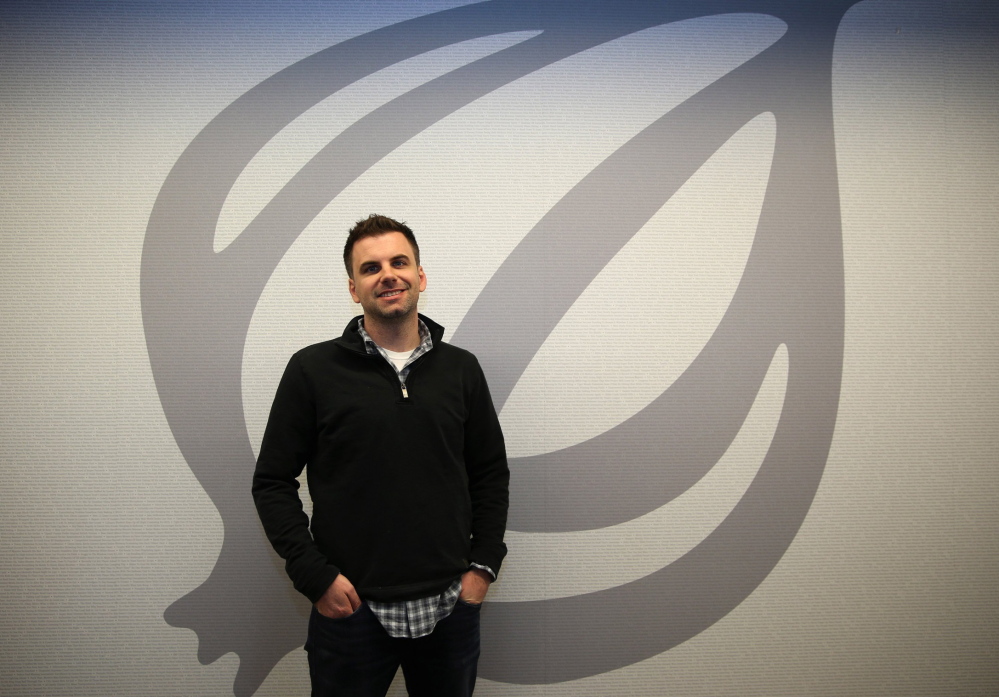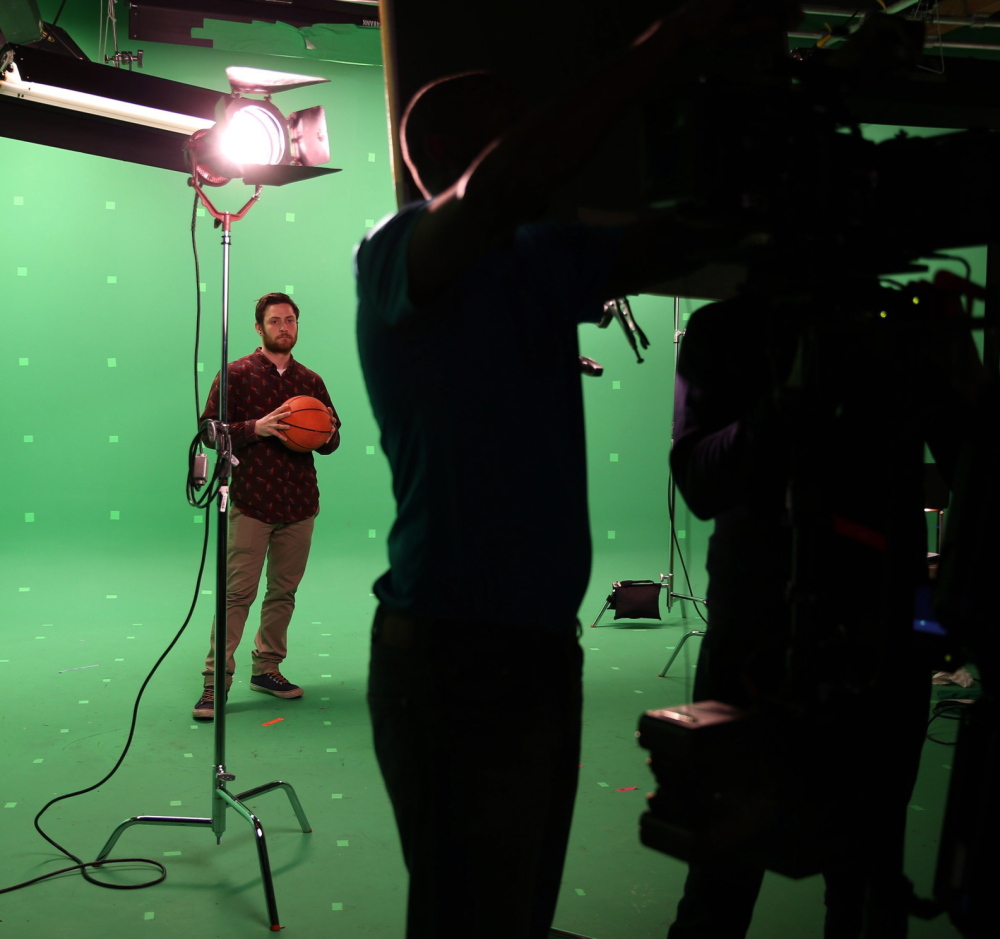The Onion is turning funny into money as a digital media company.
Two years after consolidating editorial operations in Chicago, the satirical weekly newspaper has ceased publication, its website is filled with commercial comedy videos and the company has launched its own advertising agency.
While real newspapers struggle to adapt to the changing media landscape, a fake one thinks it has figured out how to thrive in the digital age, with audience and revenue growing at a double-digit pace.
For Steve Hannah, chief executive officer and minority owner of The Onion, reinventing “America’s Finest News Source” as a diverse digital media company has worked out better – and faster – than he imagined.
“We made some calculations and we got some of them right,” said Hannah, 65. “So far, we haven’t screwed it up.”
Founded in 1988 by students at the University of Wisconsin-Madison, The Onion grew to national prominence by parodying the gravitas of newspapers with satirical headlines and stories, such as “Drugs Win Drug War.” It staked out online turf in 1996 with the launch of TheOnion.com, sharing content between print and digital.
Current owners bought The Onion in 2001, led by money manager David Schafer. The editorial staff relocated to New York that year, leaving the corporate headquarters behind in Wisconsin. A former executive editor at the Milwaukee Journal, Hannah took the helm three years later.
Hannah moved the headquarters to Chicago in 2007, hoping to consolidate editorial and business operations here. That became an imperative during the recession in 2008 and 2009, when red ink forced The Onion to chart a new course – phasing out print operations and focusing on its websites.
In 2010, The Onion struck a deal with the Chicago Tribune and other partners across the country to publish, print and sell advertising for the publication. The strategy helped return The Onion to profitability, with digital driving revenue growth every year since, according to executives.
“The tough part about digital is getting enough scale to support an entire infrastructure of a company,” said Mike McAvoy, 34, president of Onion Inc. “It’s paying for everything now.”
Last year, The Onion newspaper ended its run with the Dec. 12 edition, a tongue-in-cheek paean to its “bright” future in print. Copies of the final issue are piled on a table near a couch in the waiting area of its River North offices, an open, 12,000-square-foot space housing giant video props, workstations, play areas and 80-plus employees navigating a dizzying creative maze.
In January 2013, The Onion relocated one block west of its old digs, where its banner still flies from the building. The move to larger quarters came less than a year after recalling its reluctant writers from New York to join The Onion’s business staff and sister entertainment publication A.V. Club under one roof.
Bringing everyone together fomented a cultural change, getting editorial and business on the same page. It also laid the groundwork for Onion Labs, an in-house advertising agency that now accounts for more than half of The Onion’s revenue, according to executives.
Last month, Rick Hamann, 41, a former creative director at Energy BBDO, was named to head Onion Labs, reflecting its growth and aspirations as a full-service creative agency.
Begun in 2012, Onion Labs was built to create branded video content for advertisers on The Onion website – basically custom commercials reflecting The Onion’s comedic sensibility. Its premise is that advertisers pay much more for video than display ads across the Internet. The lure for marketers is reaching the elusive millennial audience that The Onion serves, with the hope that a commercial video might go viral, offering a jackpot return to the brand.
The Onion has honed its expertise in video through everything from the Onion News Network, an award-winning CNN parody, to Onion SportsDome, an ESPN parody. Both shows migrated to cable TV for short runs. Video spoofs abound on The Onion’s website and its premium YouTube channel, drawing millions of viewers.
The Onion had 3.7 million unique visitors and The A.V. Club had 2.2 million unique visitors in March, according to comScore, figures that do not include mobile viewers. The Onion touts 15 million unique monthly visitors to its websites using data supplied by Google Analytics, up from 10 million two years ago. Google Analytics uses a different methodology that includes mobile viewers.
More than 47 percent of The Onion’s audience is between 18 and 34, according to comScore. Broadly, that demo covers about 26 percent of the total Internet population.
Major brands pay “six figures” for Onion Labs to create video content, including YouTube, which has booked The Onion to create April Fools’ videos for the past two years. This year’s prank featured the preselected viral video trends for 2014 that would supposedly be foisted on users, including “clocking,” where people would mass in public slowly mimicking the hands of a clock. The video went viral itself with more than 2 million views, though the joke was apparently lost on more than a few outraged commenters.
Onion Labs also unleashed a video campaign this month for shoe retailer DSW, introducing the “Monopod,” a fused pair of shoes that forces wearers to hop, a “revolutionary leap in orthopedic technology.”
Other recent clients include the state of Illinois, which hired Onion Labs to help with the final push to enroll more “young invincibles” in the Affordable Care Act. The “Hand of Fate” video shows a giant hand slapping down and injuring the target audience. The prop now resides triumphantly at The Onion’s offices.
All of the commercial videos appear on The Onion’s website, next to its news videos, such as “New Employee Finally Around Long Enough to be Deemed Incompetent.” They also live on through YouTube.
The Onion is not the only comedy company in the branded entertainment space. Funny or Die, the website started by Will Ferrell and Adam McKay and backed by Sequoia Capital, has been producing comedic videos for major marketers since its launch in 2007. Its clients include Fiat, Pepsi, Under Armour and McDonald’s.
Closer to home, Chicago improv pioneer Second City has been focusing on producing branded video content for about three years, working though ad agencies and directly with major clients such as Seattle’s Best Coffee, MillerCoors and Procter & Gamble’s Secret brand.
The projects, which use an improv brainstorming session and employ Second City talent, usually cost $100,000 to $300,000, executives said. Though The Second City doesn’t have the built-in distribution channel used by The Onion, the comedic videos generally reside on the brand’s website and YouTube pages. Also, they are often chopped up into 15- and 30-second commercials to run as paid media online and, in some cases, as television ads.
Business in branded content has been booming, with revenues projected to triple this year, according to Tom Yorton, CEO of Second City Communications.
“We’ve definitely seen it become a big part of our company’s growth,” Yorton said. “It’s essentially what we’ve been doing onstage for 55 years, but linked up to a brand, and using the tools of new media.”
Send questions/comments to the editors.




Success. Please wait for the page to reload. If the page does not reload within 5 seconds, please refresh the page.
Enter your email and password to access comments.
Hi, to comment on stories you must . This profile is in addition to your subscription and website login.
Already have a commenting profile? .
Invalid username/password.
Please check your email to confirm and complete your registration.
Only subscribers are eligible to post comments. Please subscribe or login first for digital access. Here’s why.
Use the form below to reset your password. When you've submitted your account email, we will send an email with a reset code.